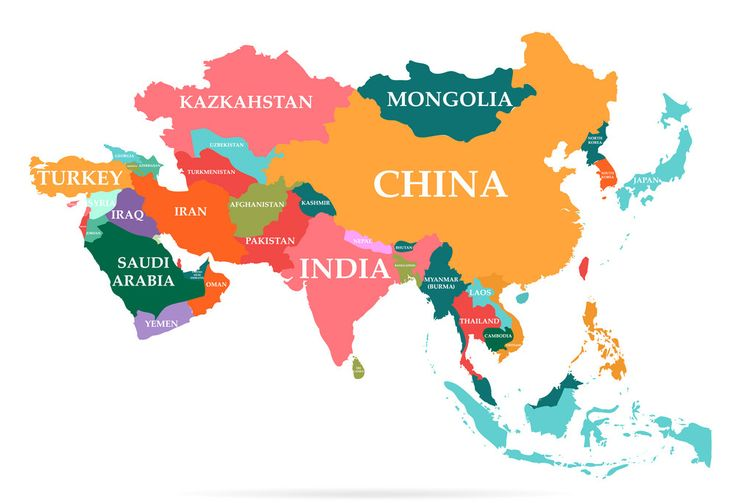MBBS in Asia

Studying MBBS in Asia has become a popular choice among Indian students due to the quality of education, affordable tuition fees, and proximity to India.
Countries like China, the Philippines, Russia, Kazakhstan, Nepal, and Bangladesh offer excellent medical education options at significantly lower costs compared to private medical colleges in India.
Moreover, many Asian universities are recognized by world-leading organizations like the World Health Organization (WHO) and the National Medical Commission (NMC), the Foundation for Advancement of International Medical Education & Research (FAIMER). Which allows MBBS degrees to be valid all over the world.
In this comprehensive guide, we will cover everything you need to know about pursuing MBBS in Asia, from reasons why it’s a great option for Indian students to eligibility criteria, top universities, the admission process, and more.
Why Choose MBBS in Asia?
Affordable Tuition Fees
One of the primary reasons Indian students opt for MBBS in Asia is the lower cost of education. Asian medical universities offer high-quality education at a fraction of the price compared to private medical colleges in India.
Global Recognition
Medical degrees obtained from most Asian universities are recognized by international medical organizations such as WHO, MCI/NMC, FAIMER, and ECFMG. This makes it easier for graduates to practice medicine in India or abroad after passing the required exams
High-Quality Education
Many Asian universities have well-established medical programs with experienced faculty, state-of-the-art infrastructure, and modern teaching techniques.
English Medium Instruction
Several universities in Asia offer MBBS courses in English, making it easier for Indian students to study without language barriers.
Excellent Faculty
Foreign medical universities have world-class faculties. They are experts in their particular field and help to sharpen their skills.
Cultural Familiarity
Countries in Asia, especially South Asia and Southeast Asia, share cultural similarities with India, making it easier for students to adapt to the new environment.
Eligibility Criteria for MBBS in Asia
To apply for MBBS in Asia, Indian students need to meet the following eligibility criteria:
| Eligibility Criteria | Details |
| Age | The minimum age is 17 years old, students should be complete by December 31st or admission year. |
| Educational Qualification | Completed 10+2 with Physics, Chemistry, and Biology. |
| Minimum Marks | Minimum 50% marks in PCB (for general category). |
| NEET Qualification | Mandatory to qualify the NEET exam as per MCI/NMC guidelines. |
| English Proficiency | Some universities may require proficiency in English (IELTS/TOEFL). |
| Major Subjects | Physics, chemistry, biology, and English are the major subjects. |
Top MBBS Universities in Asia for Indian Students
There are 48 Asian nations, so how can we choose which is the greatest place to pursue an MBBS in Asia? These are the top 3 Asian nations where MBBS programs are offered. Here is a list of some of the top medical universities in Asia where Indian students can pursue MBBS:
| Country | University Name | Duration | Medium of Instruction |
| Russia | Kazan Federal University | 6 years | English |
| Georgia | New Vision University | 6 years | English |
| Kazakhstan | Kazakh National Medical University | 5+1 years | English |
| Kyrgyzstan | Jalalabad State Medical University | 5+1 years | English |
| China | China Medical University | 6 years | English |
| Nepal | Kathmandu University | 5.6 years | English |
| Philippines | University of Santo Tomas | 5.5 years | English |
| Bangladesh | Dhaka Medical College | 6 years | English |
| Uzbekistan | Tashkent Medical Academy | 6 years | English |
| Armenia | Yerevan State Medical University | 6 years | English |
Admission Process for MBBS in Asia
The admission process for MBBS in Asia is generally simpler than in many other regions. Here are the basic steps to follow:
- Choose a Country and University: Research and choose a country and university that meets your budget, career goals, and preferences.
- Check Eligibility: Make sure you meet the eligibility criteria, including NEET qualification and academic requirements.
- Submit Application: Complete the online or offline application form for the selected university. Submit necessary documents like 10th and 12th mark sheets, NEET scorecard, passport, and photographs.
- Receive Admission Letter: Upon successful application, the university will issue an admission letter or offer letter.
- Apply for a Student Visa: Once you receive the admission letter, apply for a student visa to the respective country.
- Pay Tuition Fees: Pay the required tuition fees as per the university’s guidelines.
- Travel to the University: After completing all formalities, travel to the country and start your MBBS journey.
Documents Required for MBBS Admission in Asia
- 10th and 12th Mark Sheets
- NEET Scorecard
- Passport
- Passport-size Photographs
- Medical Fitness Certificate
- Offer Letter from the University
- Visa Application Form (for certain countries)
- Financial Proof (if required)
Advantages of Pursuing MBBS in Asia
- No donation or capitation fees: Unlike many private medical colleges in India, most Asian universities do not charge donation or capitation fees, making education more accessible.
- Easier Admission Process: The admission process for MBBS in Asia is relatively straightforward, with minimal entrance exam requirements in many countries.
- Good student-teacher ratio: Medical universities in Asia typically have a favorable student-teacher ratio, ensuring personalized attention and better learning outcomes.
- Better Exposure to International Practices: Studying in Asian countries exposes students to diverse medical practices, diseases, and patient care techniques, broadening their knowledge and skills.
- Global Career Opportunities: After completing MBBS in Asia, graduates can pursue careers in India, the US, the UK, or other countries, provided they clear the necessary licensing exams such as FMGE, USMLE, PLAB, etc.
Cost of MBBS in Asia
The cost of studying MBBS in Asia varies from country to country. Below is a table comparing the average tuition fees and living expenses in popular Asian countries for medical studies.
| Country | Tuition Fees (for whole course) |
| Russia | Rs. 16-28 lakh |
| Georgia | Rs. 14-26 lakh |
| Nepal | Rs. 20-40 lakh |
| Bangladesh | Rs. 18-30 lakh |
| Philippines | Rs. 17-29 lakh |
| Uzbekistan | Rs. 16-27 lakh |
| Kazakhstan | Rs. 12-24 lakh |
| Kyrgyzstan | Rs. 14-26 lakh |
Duration of MBBS in Asia
The duration of MBBS in Asia varies slightly depending on the country. In most Asian countries, the MBBS course takes about 5 to 6 years to complete, which includes the internship.
For example, in China, the Philippines, Bangladesh, and Kazakhstan, the MBBS program typically lasts for 5 years of academics followed by 1 year of internship. In Russia and Armenia, the MBBS course lasts for 6 years, including clinical training.
Campus Life and Accommodation in Asia
Many top medical universities in Asia provide a vibrant campus life with modern facilities such as libraries, laboratories, sports complexes, and cultural clubs. Students can engage in various extracurricular activities and cultural events that enhance their personal development.
Most universities offer on-campus hostels that are equipped with basic amenities like Wi-Fi, mess facilities, and security. For students who prefer off-campus housing, there are several affordable options available in nearby areas.
MCI/NMC Screening Test (FMGE) for Indian Students
Upon completing MBBS in Asia, Indian students need to pass the Foreign Medical Graduates Examination (FMGE), also known as the MCI screening test, to practice in India.
This exam is mandatory for students who obtain their MBBS degree from foreign universities that are not listed in the MCI/NMC-approved list. It is essential to choose a university that is recognized by MCI to avoid complications during the certification process.
Career Opportunities
Graduates who complete their MBBS in Asia have several career paths to choose from. These include:
- Practicing in India: After clearing the Indian students can register with the Medical Council of India and start practicing as doctors in India.FMGE exam
- Post-Graduation Abroad: Students can pursue post-graduation programs in countries like the US, UK, Canada, or Australia by clearing exams like USMLE, PLAB, or AMC.
- Research and Academia: Graduates can also enter research or teaching positions in academic institutions or healthcare organizations.
- Working in Asian Countries: Many students choose to stay back and work in the country where they completed their MBBS, particularly in countries like China, Russia, and the Philippines, where there is a high demand for skilled medical professionals.
Conclusion
Choosing to pursue MBBS in Asia is a great option for Indian students looking for affordable, high-quality medical education. With globally recognized degrees, English-medium instruction, and excellent exposure to international medical practices, Asian universities provide a solid foundation for a successful career in medicine.
Whether you want to practice in India, pursue higher studies abroad, or work internationally, MBBS in Asia offers endless opportunities for Indian students.
To Start Your MBBS Career in Asia get consultation Now!
Are you ready to pursue your dream of becoming a skilled and compassionate medical professional? Look no further than MBBS in Asia, where world-class education meets cultural diversity.
Contact Us Now!
- +91- 7905736694
- bigwayeduversityvns@gmail.com
- Kabir Nagar Rd, Durgakund, Tulsi Manas Mandir Colony, Naria, Varanasi, Uttar Pradesh 221005

